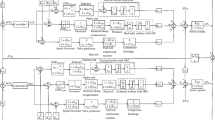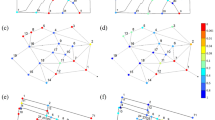Abstract
Traditionally, the optimal design of water distrubution networks has been dealt with using single-objective constrained approaches, where the aim is to minimize the network investment cost while maintaining minimum pressure head constraints at all nodes. However, in the last decade some authors have proposed multi-objective approaches which optimize other objectives than network investment cost. In most cases, these objectives have been formulated using the concept of resilience index, which mimics the design aim of providing excess head above the minimum allowable head at the nodes and of designing reliable loops with practicable pipe diameters. Although several authors have proposed different resilience indexes for this pupose, to date there is no empirical study that analyzes the advantages and disadvantages of these proposals. This paper evaluates the performance of a well-known multi-objective evolutionary algorithm, the Strength Pareto Evolutionary Algorithm 2, using three different resilience indexes. The results obtained in two water supply networks under a large number of simulated over-demand scenarios show the advantages and disadvantages of these measures.
Similar content being viewed by others
References
Alperovits A, Shamir U (1977) Design of optimal water distribution systems. Water Resour Res 13(6):885–900
Baños R, Gil C, Reca J, Martinez J (2009) Implementation of scatter search for multi-objective optimization: a comparative study. Comput Optim Appl J 42(3):421–441
Cisty M (2010) Hybrid genetic algorithm and linear programming method for least-cost design of water distribution systems. Water Resour Manag 24(1):1–24
Farmani R, Walters GA, Savic DA (2005a) Trade-off between total cost and reliability for anytown water distribution network. J Water Resour Plan Manage 131(3):161–171
Farmani R, Savic DA, Walters GA (2005b) Evolutionary multi-objective optimization in water distribution network design. Eng Optim 37(2):167–183
Fujiwara O, Khang DB (1990) A two-phase decomposition method for optimal design of looped water distribution networks. Water Resour Res 26(4):539–549
Goldberg DE (1989) Genetic algorithms in search, optimization and machine learning. Addison Wesley, New York
Gupta I, Bassin JK, Gupta A, Khanna P (1993) Optimization of water distribution systems. Environ Softw 8(4):101–113
Jayaram N, Srinivasan K (2008) Performance-based optimal design and rehabilitation of water distribution networks using life cycle costing. Water Resour Res 44:W01417
Montesinos P, Garcia-Guzman A, Ayuso JL (1999) Water distribution network optimisation using modified genetic algorithm. Water Resour Res 35(11):3467–3473
Prasad DT, Park N (2004) Multi-objective genetic algorithms for the design of pipe networks. J Water Resour Plan Manage 130(1):73–84
Raad DN, Sinske AN, Vuuren JH (2010) Comparison of four reliability surrogate measures for water distribution systems design. Water Resour Res 46:W05524
Reca J, Martínez J (2006) Genetic algorithms for the design of looped irrigation water distribution networks. Water Resour Res 42:W05416
Reca J, Martínez J, Gil C, Baños R (2008a) Application of several meta-heuristic techniquess to the optimization of real looped water distribution networks. Water Resour Manag 22(10):1367–1379
Reca J, Martinez J, Baños R, Gil C (2008b) Optimal design of gravity-fed looped water distribution networks considering the resilience index. J Water Resour Plan Manage 134(3):234–238
Rossman LA (2000) EPANET 2 user’s manual, EPA/600/R-00/057. U.S. Environmental Protection Agency. http://www.epa.gov/nrmrl/wswrd/dw/epanet.html. Accessed 9 Jan 2011 (Online)
Todini E (2000) Looped water distribution networks design using a resilience index based heuristic approach. Urban Water 2(3):115–122
Zitzler E, Thiele L (1999) Multiobjective evolutionary algorithms: a comparative case study and the strength pareto approach. IEEE Trans Evol Comput 3(4):257–271
Zitzler E, Laumanns M, Thiele L (2001) SPEA2: improving the strength pareto evolutionary algorithm for multiobjective optimization. Evolutionary Methods for Design, Optimisation, and Control, Barcelona, Spain, pp 95–10
Author information
Authors and Affiliations
Corresponding author
Rights and permissions
About this article
Cite this article
Baños, R., Reca, J., Martínez, J. et al. Resilience Indexes for Water Distribution Network Design: A Performance Analysis Under Demand Uncertainty. Water Resour Manage 25, 2351–2366 (2011). https://doi.org/10.1007/s11269-011-9812-3
Received:
Accepted:
Published:
Issue Date:
DOI: https://doi.org/10.1007/s11269-011-9812-3




